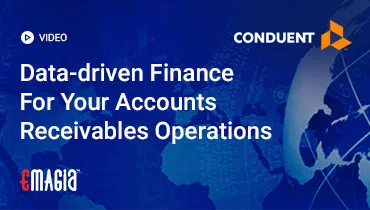Accounts Receivable Products based on specific features are transforming how businesses manage cash flow, reduce outstanding invoices, and improve customer relationships. In today’s competitive business environment, adopting the right AR tools is crucial for enhancing operational efficiency and ensuring financial health.
Introduction to Accounts Receivable Products
Accounts receivable (AR) products streamline the process of collecting payments from customers, reducing manual tasks, and improving cash flow visibility. These tools range from automated invoicing to intelligent cash application systems. They play a critical role in modern finance and accounting, especially in B2B transactions.
By integrating advanced automation, AI‑powered workflows, and real‑time reporting, AR solutions can significantly transform financial operations.
Why Feature-Based AR Products Are Essential
The landscape of AR management is evolving. Businesses no longer rely solely on manual processes or generic tools. Feature-based AR products deliver targeted capabilities designed for specific operational needs.
- Enhanced Efficiency through automation
- Reduced Days Sales Outstanding (DSO)
- Improved customer relationships
- Better compliance and reporting
Key Features to Consider in Accounts Receivable Products
When evaluating AR solutions, businesses must assess the specific features that align with their operational needs. This ensures maximum ROI and optimal process automation.
Automated Invoicing Software
Automated invoicing eliminates manual entry, reduces human error, and accelerates invoice delivery. Features include customizable invoice templates, auto‑generation, and scheduled delivery.
Recurring Billing Automation
Recurring billing automation supports subscription-based models and repeat customer billing cycles. This feature ensures invoices are issued consistently and payments are processed on time.
E-invoicing Solutions
E-invoicing delivers invoices electronically in compliance with regulatory requirements. It supports multiple formats, ensuring interoperability with customers and suppliers.
Multi-format Invoice Delivery
This capability allows businesses to deliver invoices in different formats (PDF, XML, EDI) based on customer requirements.
Late Fee Automation
Late fee automation ensures penalties for overdue payments are calculated and applied automatically. This discourages late payments and improves cash flow.
Automated Collections Software
Collections automation uses pre‑defined rules to trigger reminders, escalate overdue accounts, and track collection progress.
Dunning Workflow Automation
Dunning workflows automate communication for overdue accounts. They ensure consistent follow‑up while reducing manual intervention.
Personalized Dunning
Personalized dunning tailors communication based on customer behavior, payment history, and account risk, increasing recovery rates.
Accounts Receivable Escalation Management
This feature allows systematic escalation of unpaid accounts to higher levels for resolution, ensuring timely action and better recovery rates.
AR Automation Software — A Game Changer
AR automation software encompasses various features that transform the accounts receivable process, making it more efficient, accurate, and transparent.
Benefits of AR Automation Software
- Reduced billing disputes: Automation ensures accuracy and consistency in invoicing, decreasing errors that lead to disputes.
- Faster invoice-to-cash cycle: Automation speeds up billing, payment matching, and collections.
- Lower cost of collections: Automation reduces manual work and operational costs.
- Improved cash flow velocity: Timely invoicing and automated reminders accelerate payments.
How AR Automation Improves Efficiency
Automation in AR minimizes manual touchpoints, which reduces errors and frees up time for strategic financial planning.
Examples include automatic invoice generation, AI‑powered payment matching, and real‑time cash flow reporting.
Best Practices for AR Automation Implementation
- Assess current AR processes and bottlenecks
- Identify must-have AR software features
- Choose scalable, integratable solutions
- Train the AR team effectively
- Continuously monitor and improve AR processes
Key Challenges in AR Automation
While AR automation delivers many benefits, challenges exist:
- Integration with ERP and legacy systems
- Change management and staff training
- Ensuring data accuracy and quality
- Balancing automation with personalized customer service
Case Example: Successful AR Automation Implementation
A mid-size manufacturing company reduced DSO by 35% within 6 months of implementing an automated AR solution that included e-invoicing, predictive cash flow forecasting, and automated collections.
Building upon our detailed exploration in Part 1, we now focus on two critical aspects of modern Accounts Receivable systems — Cash Application Automation and Customer Payment Portals. These features play a pivotal role in reducing processing time, improving accuracy, and boosting the customer payment experience.
Cash Application Automation
Cash application automation is the process of automatically applying incoming payments to the correct customer invoices without manual intervention. This is a cornerstone feature for AR efficiency, reducing errors and accelerating the invoice-to-cash cycle.
Key Components of Cash Application Automation
- Automated Payment Matching: Leveraging AI and OCR (Optical Character Recognition) to match payments to invoices quickly and accurately.
- Multi-source Remittance Capture: Capturing payment remittances from various sources such as email, portals, bank feeds, and EDI.
- Real-Time Updates: Updating AR ledgers instantly to ensure cash flow visibility.
- Exception Handling: Automated alerts for unmatched payments, enabling quick resolution.
Benefits of Cash Application Automation
Implementing cash application automation can deliver significant benefits for businesses:
- Reduced processing time: Manual matching of invoices to payments is time-consuming. Automation can process payments instantly.
- Lower operational costs: Automation reduces the need for manual labor and minimizes errors.
- Improved cash flow visibility: Real-time matching gives finance teams accurate information instantly.
- Enhanced customer satisfaction: Faster payment processing builds trust and strengthens relationships.
Technologies Powering Cash Application Automation
Several technologies enable cash application automation:
- OCR and Intelligent Data Capture: Automatically extract payment details from remittance documents.
- Artificial Intelligence: Recognizes payment patterns and improves matching accuracy over time.
- Machine Learning: Learns from historical payment data to improve predictive matching.
- ERP Integration: Synchronizes payment information with accounting and ERP systems.
Best Practices for Cash Application Automation
- Integrate with multiple payment channels to centralize remittance data.
- Ensure accurate mapping between payments and invoices.
- Implement exception handling protocols for unmatched payments.
- Regularly review and optimize matching algorithms.
- Train staff to manage exceptions and maintain system accuracy.
Customer Payment Portals
Customer payment portals are secure online interfaces where customers can view invoices, make payments, and access account history. These portals streamline payment collection and enhance customer convenience.
Core Features of Customer Payment Portals
- Self-Service Access: Customers can log in to view their invoices, payment history, and account status.
- Multiple Payment Options: Supports ACH, credit card, and digital wallets for greater flexibility.
- Embedded Payment Links: Allows customers to pay directly from invoices or statements.
- Automated Reminders: Notify customers of due payments and outstanding invoices.
- Secure Payment Processing: Ensures PCI compliance and data protection.
Benefits of Customer Payment Portals
- Improved Payment Speed: Self-service portals encourage timely payments.
- Reduced DSO: Faster payment processing shortens the accounts receivable cycle.
- Better Customer Experience: Convenient payment options improve customer satisfaction.
- Lower Administrative Costs: Reduced manual follow-up on overdue accounts.
- Transparency: Customers have clear visibility into their account and payment history.
How to Optimize a Customer Payment Portal
- Provide intuitive navigation and a clean user interface.
- Offer multiple payment methods and currencies if applicable.
- Integrate the portal with your AR system and ERP.
- Enable automated reminders and status updates.
- Regularly update security features to maintain trust.
Case Study: Customer Payment Portal Impact
A large B2B distributor implemented a payment portal with embedded invoice links and multiple payment methods. Within six months, payment speed increased by 40%, DSO reduced by 20%, and customer satisfaction improved significantly.
Integrating Cash Application Automation and Payment Portals
The synergy between cash application automation and customer payment portals is transformative. When these systems work together, businesses benefit from streamlined payment processing, improved accuracy, and faster cash inflows.
Example Workflow
- Customer receives an invoice via automated invoicing software.
- Invoice includes a link to the payment portal.
- Customer makes a payment using the portal.
- Payment information is captured via automated remittance capture.
- Cash application automation instantly matches the payment to the invoice.
- AR system updates the ledger, and confirmation is sent to the customer.
Key Challenges in Implementing Cash Application Automation and Portals
- Ensuring system interoperability
- Managing exceptions efficiently
- Maintaining data security and compliance
- Ensuring customer adoption of portals
Disputes & Deductions Management
Disputes and deductions are a common challenge for AR teams. They occur when customers withhold payment partially or entirely due to issues such as invoice discrepancies, pricing errors, damaged goods, or service disputes.
Importance of Disputes & Deductions Management
- Ensures accurate financial records
- Improves cash flow predictability
- Enhances customer satisfaction by resolving disputes efficiently
- Reduces write-offs and revenue leakage
Key Features of Disputes & Deductions Management Systems
- Automated Dispute Tracking: Tracks and records disputes directly from customer payments or communication channels.
- Root Cause Analysis: Identifies recurring reasons for disputes, enabling process improvements.
- Workflow Automation: Automates dispute resolution processes, assigning cases to the right teams.
- Customer Communication Portals: Allow customers to submit disputes online, reducing email back-and-forth.
- Integration with ERP: Synchronizes dispute status with accounting and collections systems.
Benefits of Disputes & Deductions Management
- Faster resolution of disputes
- Reduced Days Sales Outstanding (DSO)
- Enhanced compliance with audit standards
- Improved relationships with customers
- Better cash flow visibility and accuracy
Best Practices in Disputes & Deductions Management
- Implement automated dispute tracking within AR software.
- Maintain a centralized repository for all dispute records.
- Use analytics to identify trends and recurring issues.
- Train staff to resolve disputes quickly and effectively.
- Integrate dispute management with CRM for better communication.
Case Study: Disputes Management Implementation
A multinational manufacturing company implemented a disputes management module integrated with their AR software. Within nine months, dispute resolution time dropped by 60%, and cash flow predictability improved by 25%.
Predictive Cash Flow Forecasting
Predictive cash flow forecasting uses advanced algorithms, AI, and historical data to forecast future cash flows with high accuracy. This allows companies to anticipate financial needs and avoid liquidity issues.
Key Components of Predictive Cash Flow Forecasting
- Historical Data Analysis: Uses past payment patterns to project future cash inflows and outflows.
- AI and Machine Learning Models: Continuously improve forecast accuracy based on new data.
- Integration with AR Systems: Uses real-time receivables data to refine predictions.
- Scenario Planning: Enables finance teams to model different business scenarios.
- Visualization Dashboards: Presents forecasts in a user-friendly, actionable format.
Benefits of Predictive Cash Flow Forecasting
- Improved financial planning and budgeting
- Early identification of potential liquidity issues
- Optimized working capital management
- Better decision-making through data-driven insights
- Increased confidence for investors and stakeholders
Predictive Techniques in Cash Flow Forecasting
- Time Series Analysis: Leverages historical cash flow data to forecast trends.
- Regression Analysis: Identifies correlations between cash flow and influencing factors.
- Scenario-Based Forecasting: Models best-case, worst-case, and expected outcomes.
- Rolling Forecasts: Updates forecasts dynamically as new data arrives.
Best Practices in Predictive Cash Flow Forecasting
- Ensure high-quality and up-to-date data feeds.
- Integrate AR and AP data for a holistic cash flow view.
- Use scenario planning to prepare for uncertainties.
- Regularly review forecast accuracy and adjust models accordingly.
- Collaborate with all departments for realistic forecasts.
Case Study: Predictive Cash Flow Implementation
A leading logistics company adopted predictive cash flow forecasting integrated with AR automation. The result was a 30% improvement in forecast accuracy and better cash reserves management, enabling strategic investments.
Strategic Benefits of Combining Disputes Management and Predictive Forecasting
When AR systems incorporate both disputes management and predictive forecasting, the benefits compound:
- Faster dispute resolution improves cash flow predictability.
- Accurate forecasts enable proactive dispute resolution planning.
- Enhanced customer relationships reduce payment delays.
- Strategic financial planning becomes more reliable.
Real-time AR Reporting
Real-time Accounts Receivable reporting is a powerful feature that enables finance teams to monitor receivables status instantly. This capability transforms decision-making by providing accurate and up-to-date insights into cash flow and outstanding invoices.
Importance of Real-time AR Reporting
- Instant visibility into receivables status
- Improved cash flow monitoring
- Early detection of overdue invoices
- Better compliance and audit readiness
- Enhanced decision-making for strategic planning
Key Features of Real-time AR Reporting Systems
- Dynamic Dashboards: Interactive dashboards showing real-time data on receivables, collections, and payment trends.
- Automated Alerts: Notifications for overdue invoices, disputes, or credit issues.
- Customizable Reports: Tailor reports to meet business-specific requirements.
- Mobile Access: Access reports and dashboards on any device.
- Integration with ERP Systems: Real-time synchronization with core finance systems.
Benefits of Real-time AR Reporting
- Faster collections due to early issue detection
- Reduced Days Sales Outstanding (DSO)
- Better credit risk management
- Improved financial forecasting
- Higher operational efficiency
Best Practices in Real-time AR Reporting
- Use integrated AR dashboards for a single source of truth.
- Automate report generation for timely decision-making.
- Ensure data accuracy with real-time synchronization.
- Provide team access to AR insights across departments.
- Use trend analysis for proactive collections planning.
Case Study: Real-time AR Reporting Implementation
A leading retail company integrated real-time AR dashboards into their collections process. This reduced overdue invoices by 40% and improved forecasting accuracy by 35%, directly impacting cash flow and reducing borrowing needs.
ERP Integration for AR
ERP Integration for Accounts Receivable is the backbone of modern finance operations. It connects AR software with enterprise systems, ensuring seamless flow of financial data across departments and processes.
Importance of ERP Integration
- Eliminates duplicate data entry
- Improves accuracy and compliance
- Enhances reporting capabilities
- Speeds up collections and payment reconciliation
- Provides a unified financial view
Key Features of ERP Integration for AR
- Bi-directional Data Flow: Real-time synchronization between AR and ERP systems.
- Automated Invoice Posting: AR invoices automatically post into the ERP ledger.
- Unified Customer Data: Consolidated customer profiles across systems.
- Integrated Payment Processing: Payments update AR and ERP systems instantly.
- Compliance and Audit Trails: Transparent tracking of all transactions.
Benefits of ERP Integration for AR
- Improved efficiency through automation
- Enhanced accuracy of financial data
- Reduced operational costs
- Faster month-end closing
- Better cash flow forecasting
Best Practices for ERP Integration in AR
- Select AR software with pre-built ERP connectors.
- Establish data governance policies for AR-ERP integration.
- Conduct regular integration audits for accuracy.
- Train finance staff on integrated AR workflows.
- Leverage analytics from integrated data for strategic decision-making.
Case Study: ERP Integration for AR
A global manufacturing firm integrated their AR solution with SAP ERP. This integration reduced manual data entry by 75%, accelerated invoice processing, and improved financial reporting timelines significantly.
Collector Performance Management
Collector Performance Management is an AR feature that tracks and optimizes the effectiveness of collection teams. It aligns incentives, monitors performance, and ensures adherence to company goals.
Importance of Collector Performance Management
- Improves collections productivity
- Ensures accountability among collectors
- Enhances team motivation through clear KPIs
- Identifies performance gaps and training needs
- Drives continuous improvement in AR collections
Key Features of Collector Performance Management
- Performance Dashboards: Track collector KPIs in real time.
- Automated Reporting: Reports on collection success rates and DSO reduction.
- Gamification: Incentive programs based on performance metrics.
- Integration with CRM: Streamlined collection workflows and customer interactions.
- Audit Logs: Ensure accountability and transparency in collector activity.
Benefits of Collector Performance Management
- Higher collection rates and lower DSO
- Improved customer communication and relationships
- Greater transparency in AR operations
- Optimized allocation of collector resources
- Reduced collection costs
Best Practices for Collector Performance Management
- Establish clear KPIs for collectors.
- Use performance dashboards for continuous tracking.
- Align collector incentives with company goals.
- Provide regular feedback and training.
- Leverage automation for low-value collections to focus human effort on high-value cases.
Case Study: Collector Performance Management Implementation
An international telecom company implemented collector performance dashboards and gamification tools. Over a year, they achieved a 20% increase in collections efficiency and a 15% reduction in DSO.
Strategic Benefits of Real-time AR Reporting, ERP Integration, and Collector Performance Management
Combining these features creates a powerful AR ecosystem where:
- Real-time reporting provides actionable insights.
- ERP integration ensures seamless workflows and data integrity.
- Collector performance management drives efficiency and accountability.
- The result is reduced DSO, improved cash flow, and stronger customer relationships.
How Emagia Elevates Accounts Receivable Operations
Emagia provides a next-generation Accounts Receivable platform designed to optimize collections, improve cash flow, and reduce operational costs through automation, real-time insights, and integrated workflows. Its specialized features address the challenges faced by modern finance teams.
Key Benefits of Emagia for Accounts Receivable
- End-to-End AR Automation: From invoicing to collections, Emagia automates processes to save time and reduce errors.
- Real-time Reporting & Dashboards: Instant visibility into receivables, aging, and collector performance.
- ERP and CRM Integration: Seamlessly connects with core business systems for unified data and operations.
- Intelligent Workflow Automation: Uses AI-driven recommendations to prioritize collections and resolve disputes.
- Collector Performance Optimization: Improves efficiency with performance tracking, gamification, and automated escalation workflows.
How Emagia Addresses Core AR Challenges
- DSO Reduction: Advanced analytics identify overdue accounts early and streamline follow-ups.
- Cash Flow Improvement: Automation speeds up collections and ensures better cash predictability.
- Error Reduction: Eliminates manual entry mistakes through automated reconciliation and payment matching.
- Compliance Assurance: Audit trails and real-time documentation ensure regulatory compliance.
- Scalability: Supports business growth with modular, cloud-based AR solutions.
Case Study: Emagia in Action
A leading multinational corporation adopted Emagia’s Accounts Receivable platform, integrating it with SAP ERP and their payment systems. Within six months, they reduced DSO by 22%, increased cash flow visibility, and enhanced collector productivity by 30%.
FAQs About Accounts Receivable Products Based on Specific Features
What are the most important features to look for in Accounts Receivable products?
Key features include automation for invoicing and collections, real-time reporting, ERP integration, dispute management, multi-channel payment processing, and collector performance tools.
How does automation improve AR performance?
Automation reduces manual errors, accelerates invoice-to-cash cycles, provides real-time data for decision-making, and frees teams to focus on high-value activities.
Why is ERP integration important for Accounts Receivable?
ERP integration ensures data accuracy, streamlines workflows, avoids duplicate entries, and provides a unified financial view for the entire organization.
How can real-time reporting benefit my AR process?
Real-time reporting offers instant insight into receivables, enables proactive collection strategies, improves cash flow forecasting, and supports faster decision-making.
What role does collector performance management play in AR efficiency?
It aligns collector activities with strategic goals, tracks KPIs, motivates collectors, reduces DSO, and enhances collection productivity.
Can AR software help with dispute management?
Yes. Modern AR solutions provide automated workflows for dispute resolution, ensuring quick resolution and reducing delays in payment collection.
How does Emagia ensure compliance in AR?
Emagia provides full audit trails, secure data handling, regulatory compliance features, and detailed reporting to ensure transparency and accuracy.
What ROI can I expect from implementing an advanced AR platform?
Companies typically see improvements in DSO, cash flow visibility, operational efficiency, and reduced manual effort, which collectively lead to significant ROI within months.
Final Thoughts and Conclusion
This detailed five‑part guide has covered every major aspect of Accounts Receivable Products Based on Specific Features, including automation, reporting, ERP integration, dispute management, and collector performance management. By strategically adopting advanced AR tools, businesses can transform their receivables operations reducing costs, improving cash flow, and enhancing financial visibility.
Emagia stands out as a leading solution provider in this space, offering end-to-end automation, advanced reporting, and integration capabilities that empower organizations to achieve measurable AR improvements. With a focus on innovation, Emagia delivers tools that help finance teams stay ahead in a competitive landscape.
Call to Action
If your business is seeking to enhance Accounts Receivable efficiency, reduce DSO, and improve cash flow, exploring Emagia’s AR platform is a strategic move. Embrace automation, gain real-time insights, and transform your receivables process for sustainable growth.



